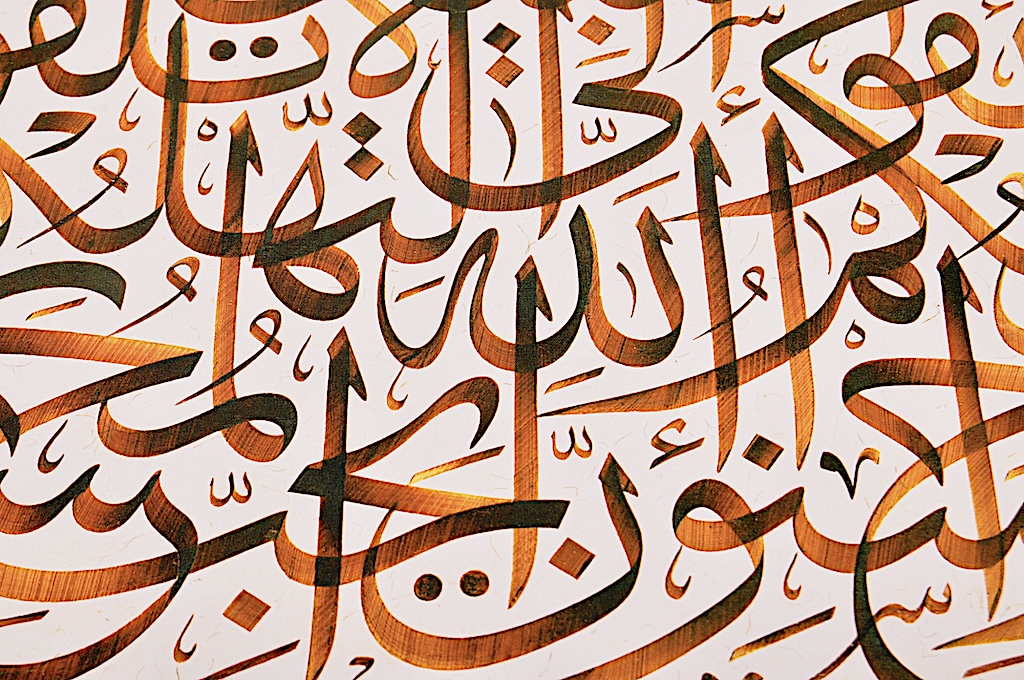Arabic letters are considered the core and foundation of the Arabic language, as they represent the primary building blocks from which words are formed and through which meanings and diverse sounds are woven. The Arabic alphabet consists of twenty-eight letters, beginning with alif and ending with ya, arranged in a precise order that defines its complete structure.
One of the unique aspects of Arabic letters is that their shape changes depending on their position within a word: a letter has a distinct form when it appears at the beginning, another form in the middle, and yet another at the end. Each letter also carries a unique sound that enriches the phonetic diversity of the Arabic language and enhances the variety of its articulation points, giving Arabic a remarkable richness in both pronunciation and meaning.
Arabic letters are not limited to being merely tools for writing; they are considered an art form in their own right. Muslim calligraphers have excelled in transforming these letters into sophisticated artistic shapes through the art of Arabic calligraphy, which has adorned mosque walls, Qur’anic manuscripts, and historical scrolls throughout the centuries. Thus, Arabic letters have risen to an aesthetic level that grants them a special and unique status among global writing systems, with a value that transcends functionality to embody a distinctive artistic and historical dimension.
الحُرُوفُ العَرَبِيَّةُ تُعَدُّ جَوْهَرَ اللُّغَةِ العَرَبِيَّةِ وَأَسَاسَهَا الرَّئِيسِيَّ، إِذْ أَنَّهَا تُـمَثِّلُ اللَّبِنَاتِ الأُولَى الَّتِي تَتَشَكَّلُ مِنْهَا الكَلِمَاتُ وَتُنسَجُ بِهَا المَعَانِي وَالأَصْوَاتُ المُتَنَوِّعَةُ. الأَبْجَدِيَّةُ العَرَبِيَّةُ تَتَأَلَّفُ مِنْ ثَمَانِيَةٍ وَعِشْرِينَ حَرْفًا، تَبْدَأُ بِالأَلِفِ وَتَنْتَهِي بِاليَاءِ، وَتَتَمَيَّزُ بِتَرْتِيبٍ مُحَدَّدٍ يَضْبُطُ بِنْيَتَهَا الكَامِلَةَ.
مِنَ الجَوَانِبِ الفَرِيدَةِ لِلأَحْرُفِ العَرَبِيَّةِ تَغَيُّرُ شَكْلِ الحَرْفِ حَسْبَ مَوْقِعِهِ ضِمْنَ الكَلِمَةِ؛ فَيَأْتِي الحَرْفُ فِي أَوَّلِ الكَلِمَةِ بِهَيْئَةٍ، وَفِي وَسَطِهَا بِصِيغَةٍ أُخْرَى، وَفِي آخِرِهَا بِشَكْلٍ مُغَايِرٍ. كَمَا أَنَّ لِكُلِّ حَرْفٍ صَوْتًا مُمَيَّزًا يُسْهِمُ فِي ثَرَاءِ النَّغَمَاتِ الصَّوْتِيَّةِ لِلُّغَةِ العَرَبِيَّةِ، وَيُعَزِّزُ مِنْ تَنَوُّعِ مَخَارِجِهَا الصَّوْتِيَّةِ، مِمَّا يَمْنَحُ العَرَبِيَّةَ ثَرَاءً وَاضِحًا فِي النُّطْقِ وَالمَعْنَى.
لا تَقْتَصِرُ الحُرُوفُ العَرَبِيَّةُ عَلَى كَوْنِهَا أَدَاةً لِلْكِتَابَةِ فَحَسْبُ، بَلْ تُعَدُّ فَنًّا فِي حَدِّ ذَاتِهَا. لَقَدْ أَبْدَعَ الخَطَّاطُونَ المُسْلِمُونَ فِي تَحْوِيلِ هَذِهِ الحُرُوفِ إِلَى أَشْكَالٍ فَنِّيَّةٍ رَاقِيَةٍ مِنْ خِلَالِ فَنِّ الخَطِّ العَرَبِيِّ، وَالَّذِي زَيَّنَ جُدْرَانَ المَسَاجِدِ وَالمَصَاحِفَ وَالمَخْطُوطَاتِ عَلَى مَرِّ العُصُورِ. وَبِهَذَا ارْتَقَتِ الحُرُوفُ العَرَبِيَّةُ إِلَى مُسْتَوًى جَمَالِيٍّ يَمْنَحُهَا مَكَانَةً خَاصَّةً وَفَرِيدَةً بَيْنَ أَنْظِمَةِ الكِتَابَةِ العَالَمِيَّةِ، حَيْثُ لا تَنْحَصِرُ قِيمَتُهَا فِي الجَانِبِ الوَظِيفِيِّ فَحَسْبُ، بَلْ تَتَعَدَّاهُ إِلَى عُنْصُرٍ جَمَالِيٍّ وَتَارِيخِيٍّ مُتَمَيِّزٍ.
Use the following links to learn more about Arabic alphabets and vowels with us for free:
https://fayza.co.uk/courses/introduction-to-writing-arabic-letters/
https://fayza.co.uk/courses/introduction-to-reading-arabic-letters/
https://forms.gle/sLxHtbs1DbPPMNT87 اختبر نفسك
Test yourself https://forms.gle/sCx8Lxc89M8FU5ATA

